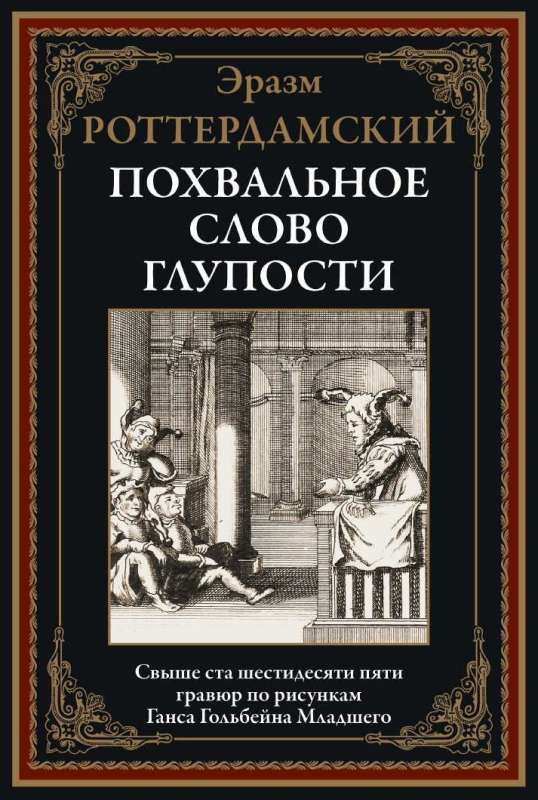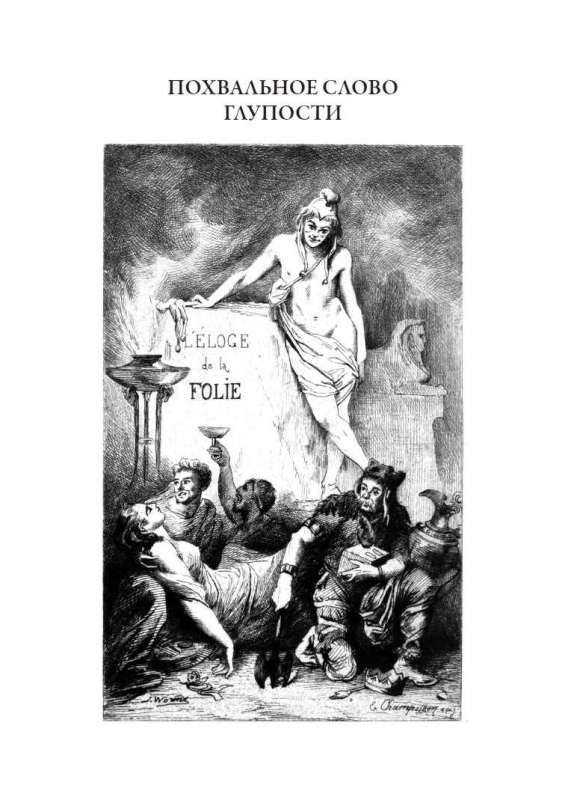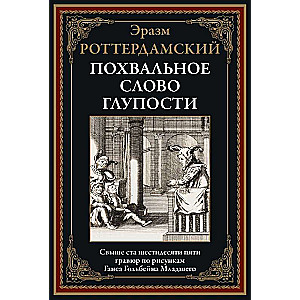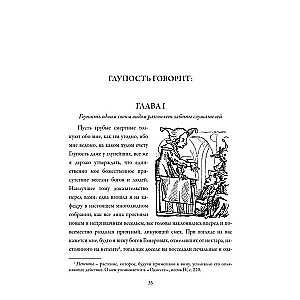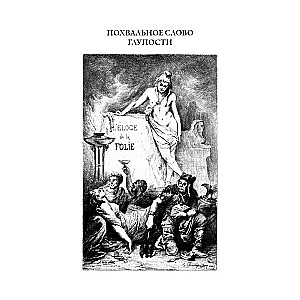The Praise of Folly
The most famous work of the renowned Dutch thinker and writer Erasmus of Rotterdam — «The Praise of Folly», was written in Latin in 1509. In it, the author wittily criticizes both the European society of his time and the...
church customs. The text is presented in a translation by P. K. Guber, whose preface precedes this edition. The book is equipped with numerous comments, an article by P. Ardashev on the life and works of the author, and is adorned with drawings by Hans Holbein the Younger.
In the first half of the 16th century, Erasmus of Rotterdam was as well known in Europe as Voltaire two centuries later. English and French monarchs invited him to their courts, and the most educated scholars considered it an honor to correspond with this brilliant erudite. Meanwhile, the beginning of the future connoisseur of antiquity's life was bleak. Erasmus was born in 1467 in Rotterdam. His father's marriage was not registered, and thus, formally, the boy was considered illegitimate. His parents died early, and the youth, in despair, entered a monastery. There, he fully witnessed monastic hypocrisy and piety, which he later ironically mocked in his «The Praise of Folly». However, the monastery provided Erasmus with a wonderful opportunity for self-education, and within a few years, the young man read and spoke Latin perhaps better than his native Dutch. He attracted the attention of the educated public by publishing a collection of sayings and short stories extracted from the legacy of antiquity, and later gained fame as an enlightened theologian. He wrote «The Praise of Folly» in 1509 while traveling from Italy to his native Holland, simply to pass the time. Erasmus himself regarded this work as a kind of literary trifle, however, over time, it overshadowed the substantial treatises of the humanist scholar. It is enough to say that during Erasmus's lifetime, «The Praise of Folly» was published in Europe forty times. The likeness of Erasmus of Rotterdam was captured for posterity by one of the greatest painters of the 16th century — the German artist Hans Holbein the Younger. This portrait, dated 1523, can now be seen in the National Gallery in London. In the famous humanist's portrait, he wears a warm fur-lined cloak, and his hands rest on a red-bound book. On the edge, there is an inscription in Latin and Greek — «The Herculean Labor of Erasmus of Rotterdam». The artist and philosopher knew each other well. In Basel, where Erasmus spent the last years of his life, Holbein had a workshop. When the artist arrived in England, he brought with him letters of recommendation from Erasmus and initially lived in the home of his philosopher friend — the famous author of «Utopia», Thomas More. The writer himself requested Holbein to create illustrations for his «Praise of Folly». In response, the artist made a series of engravings that adorn this edition. By style, they resemble the series of drawings «Dance of Death» created later by Holbein. Erasmus of Rotterdam specifically paired each picture in this series with a quote from the Bible in Latin. Holbein outlived his philosopher friend by seven years.
Author: РОТТЕРДАМСКИЙ Э.
Printhouse: SZKEO
Series: Library of World Literature
Year of publication: 2023
ISBN: 9785960308229
Number of pages: 272
Size: 170 × 240 мм mm
Cover type: Твердый переплет
Weight: 540 g
ID: 1478636
-
MNOGOKNIG Gmbh, Frederichstrasse 176-179, Berlin, Germany, 10117+4915205421866
